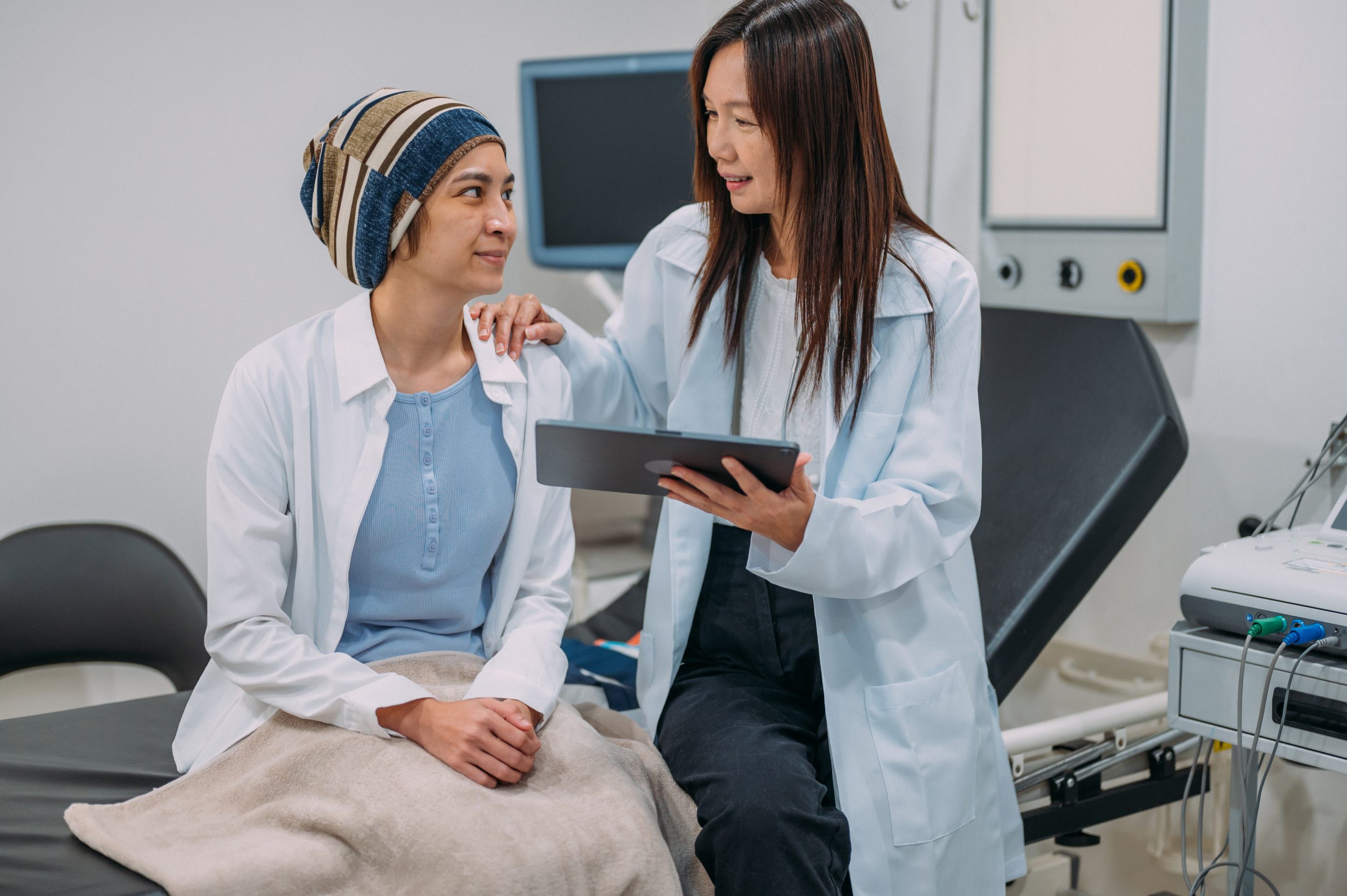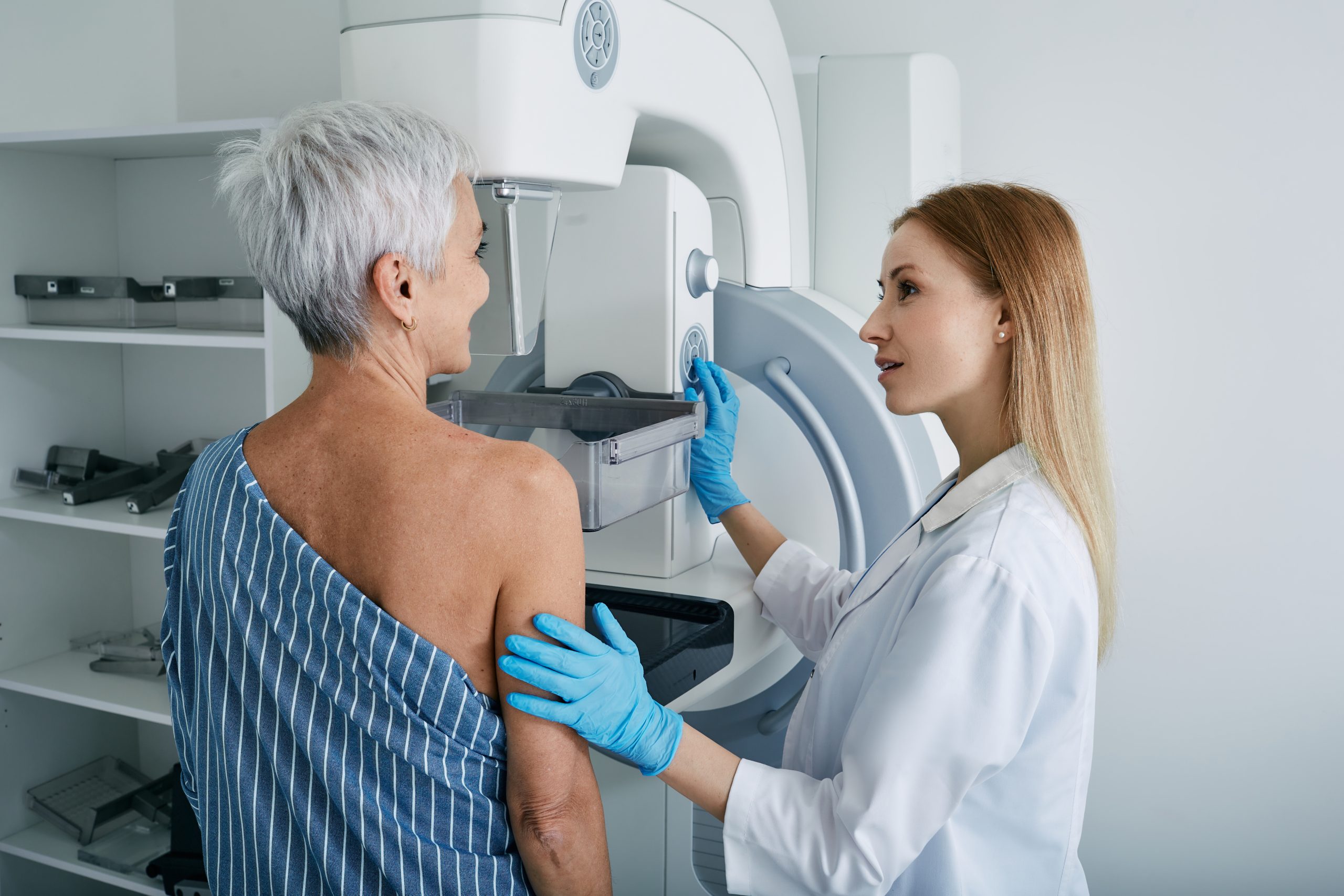Breast Cancer Awareness: Detecting Breast Cancer
October marks Breast Cancer Awareness Month; no matter your gender, it’s important to be informed about this type of cancer. According to the American Cancer Society, breast cancer is the most common cancer to be diagnosed among women. Being proactive with early detection and knowing potential risk factors could not only save your life but save the lives of those close to you. We’d like to shed some light on detecting breast cancer.
What is breast cancer?
Cancer occurs when there is an excessive number of cells grow uncontrollably in the body and destroy body tissue. The American Cancer Society defines breast cancer as “a group of diseases in which cells in breast tissue change and divide uncontrolled, typically resulting in a lump or mass”.
Breast cancer is a medical condition characterized by the abnormal and uncontrolled growth of cells in the breast tissue. It can develop in either the lobules, ducts or the connective tissue within the breast. The condition is one of the most prevalent types of cancer among women globally, although men can also be diagnosed with this disease.
Breast cancer can be non-invasive, where the cancer cells remain within the site of origin, or invasive, where the cancer cells spread beyond the initial site to other parts of the breast or body. The precise causes of breast cancer remain unknown. Still, certain risk factors including age, genetics, and lifestyle choices, such as alcohol consumption and lack of physical activity, have been linked to the development of the disease.

What are the signs of breast cancer?
Breast cancer, one of the most common malignancies in women worldwide, often presents with several noticeable signs and symptoms. The most common symptom is a new lump in the breast or underarm that often feels hard, irregular in shape, and immovable. Some women may not feel a distinct lump but a change in breast size, shape, or contour instead. Other symptoms can include thickening or swelling of part of the breast, unexplained shrinkage (especially if on one side only), or a change in the skin over the breast.
In many instances, the skin might appear dimpled, puckered, or scalloped (similar to an orange peel), which is a symptom known as “peau d’orange”. The breast skin might also appear irritated or red, develop ulcers, or the nipple might retract (turn inward). Some women may also notice changes to the nipple, such as it becoming red, turning inward, or developing a scaliness, thickening, or unusual discharge other than breast milk.
Other symptoms of breast cancer, according to the CDC, can include:
- Nipple discharge
- Swelling of the breast
- Redness in the nipple area or breast
- Breast pain
- Change of shape or size of the breast
- Irritation of breast skin
Not only is it important to regularly get breast cancer screenings by a medical professional, but it is also important to routinely do breast self-exams or a BSE. A BSE is something you can do from the comfort of your home or in the shower. If you notice anything abnormal such as a lump, it is imperative that you seek help from a health care provider.
It is essential to note that while these symptoms can indicate the presence of breast cancer, they can also be due to other less serious conditions. Regardless, any changes to the breast should be reported to a healthcare provider promptly for further evaluation. Early detection and treatment of breast cancer significantly increase the chances of successful management and recovery.

How do doctors diagnose breast cancer?
Breast cancer is typically diagnosed through a combination of various screening and diagnostic tests. Mammography, a type of X-ray imaging, is one of the most common tools used for early detection of abnormalities in breast tissue. If suspicious areas are identified during mammography, further diagnostic steps may involve an ultrasound or magnetic resonance imaging (MRI) to get a better view of the specific area.
A biopsy, the procedure of taking a sample of the suspected tissue for laboratory testing, represents the only definitive method to confirm a breast cancer diagnosis. The lab tests can identify the type and stage of cancer, informing the most appropriate treatment approach.
What are the risk factors associated with breast cancer?
While not a major risk factor, family history can play a part in being diagnosed with breast cancer. According to cancer.org, 5-10% of breast cancer is hereditary. Therefore, it is essential to be aware of your family history. Other factors that can put you at risk include:
- Not enough physical exercise
- Older age, as breast cancer is commonly diagnosed in women after the age of 50
- Consumption of alcohol
- Smoking
- Taking hormones
- Pregnancy history as well as menstrual history
- Low Vitamin D levels

What does treatment look like for breast cancer?
Treatment for any type of cancer is typically expensive and extensive. Additionally, treatment varies depending on the stage of cancer. Chemotherapy, radiation, and surgery are just a few examples of treatment for breast cancer. Many people think that chemotherapy and radiation therapy are the same, but there is a difference. The purpose of both treatments is to kill or shrink cancer cells. Chemotherapy uses oral and intravenous drugs to kill the cells, while radiation therapy uses radiation to disrupt DNA to stop cell division, which results in cell death.
Lumpectomy and mastectomy are the two surgeries used to treat breast cancer. During a lumpectomy, cancer tissue is removed from the breast. This procedure is also known as breast-conserving because only a portion of the breast is removed. A lumpectomy is typically done in the early stage of breast cancer and is followed by radiation therapy to reduce the chance of the cancer returning.
A mastectomy is performed when a patient can’t be treated with a lumpectomy, if the patient has a tumor larger than 5 centimeters, or to prevent the cancer from returning. It may also come down to the personal preference of the cancer patient. During a mastectomy, the entire breast is removed. Many women choose to get a mastectomy as a means of getting rid of the cancer as quickly as possible.
Prevention and early detection are key.
Early detection of breast cancer is crucial for improving the chances of successful treatment and survival. Thanks to advances in medical technology and awareness campaigns, women now have access to a variety of screening and diagnostic tools. It is essential for individuals to work closely with their healthcare providers to develop a personalized breast cancer detection plan tailored to their risk factors and medical history.
Regular screenings and self-exams, coupled with the latest medical technologies, are powerful weapons in the fight against breast cancer, ultimately saving lives and reducing the impact of this devastating disease.
Another useful action you can take is to enroll in cancer insurance. Upon a positive diagnosis of cancer, cancer insurance can help alleviate the financial stress that comes with having cancer such as funding your treatments, lodging, transportation, and much more. Note that you may not qualify for cancer insurance for 12 months if you have a pre-existing condition (such as cancer) when enrolling in the benefit, so it is imperative that you are proactive in enrolling in cancer insurance. Breast Cancer Awareness Month is a time to educate and support survivors and their families. Please join us in making October a month of hope, strength, and resilience for those affected by breast cancer.
Be sure to follow us on LinkedIn, Twitter, and Facebook as well as our blog for the latest Higginbotham Public Sector updates.
